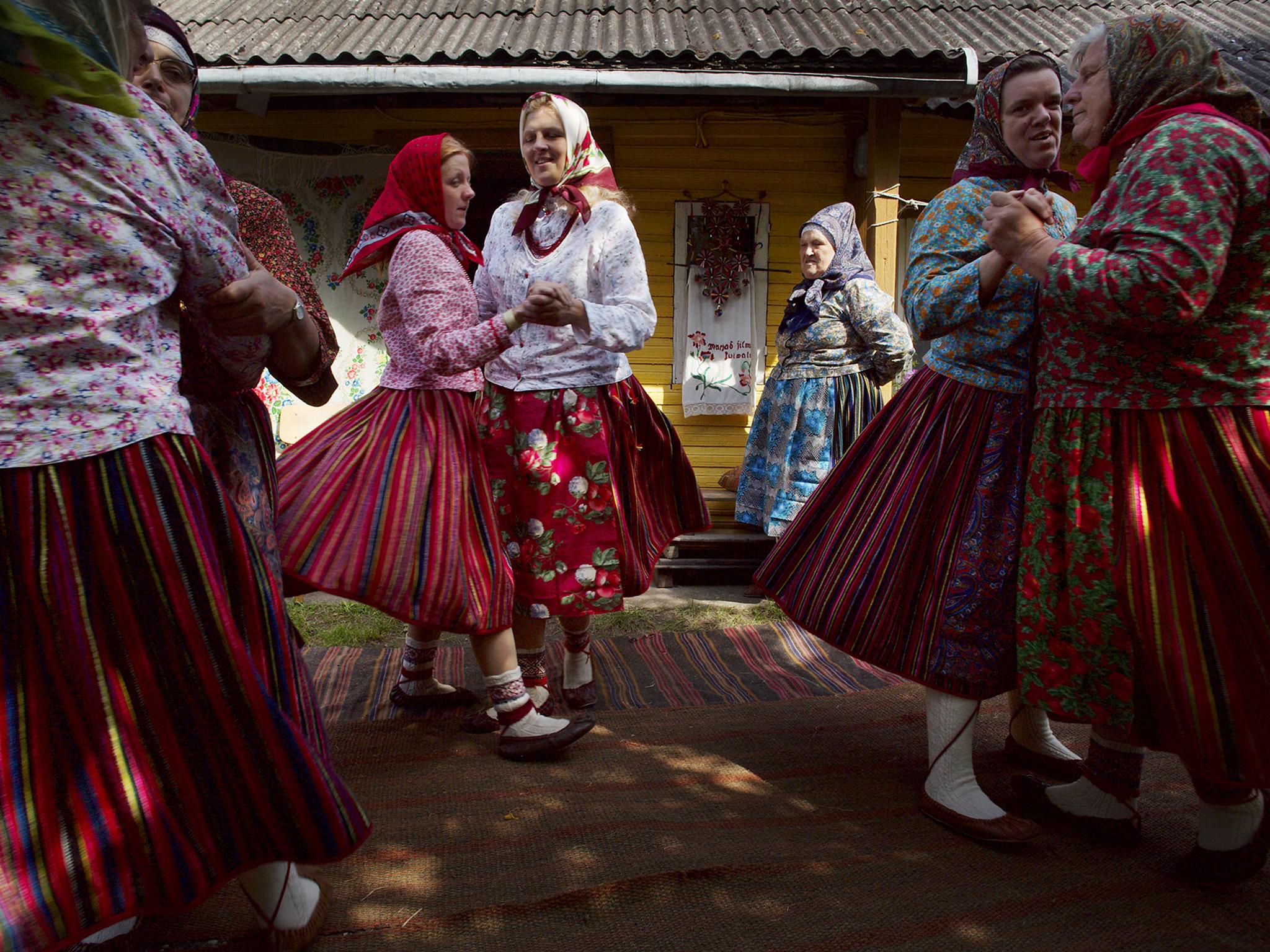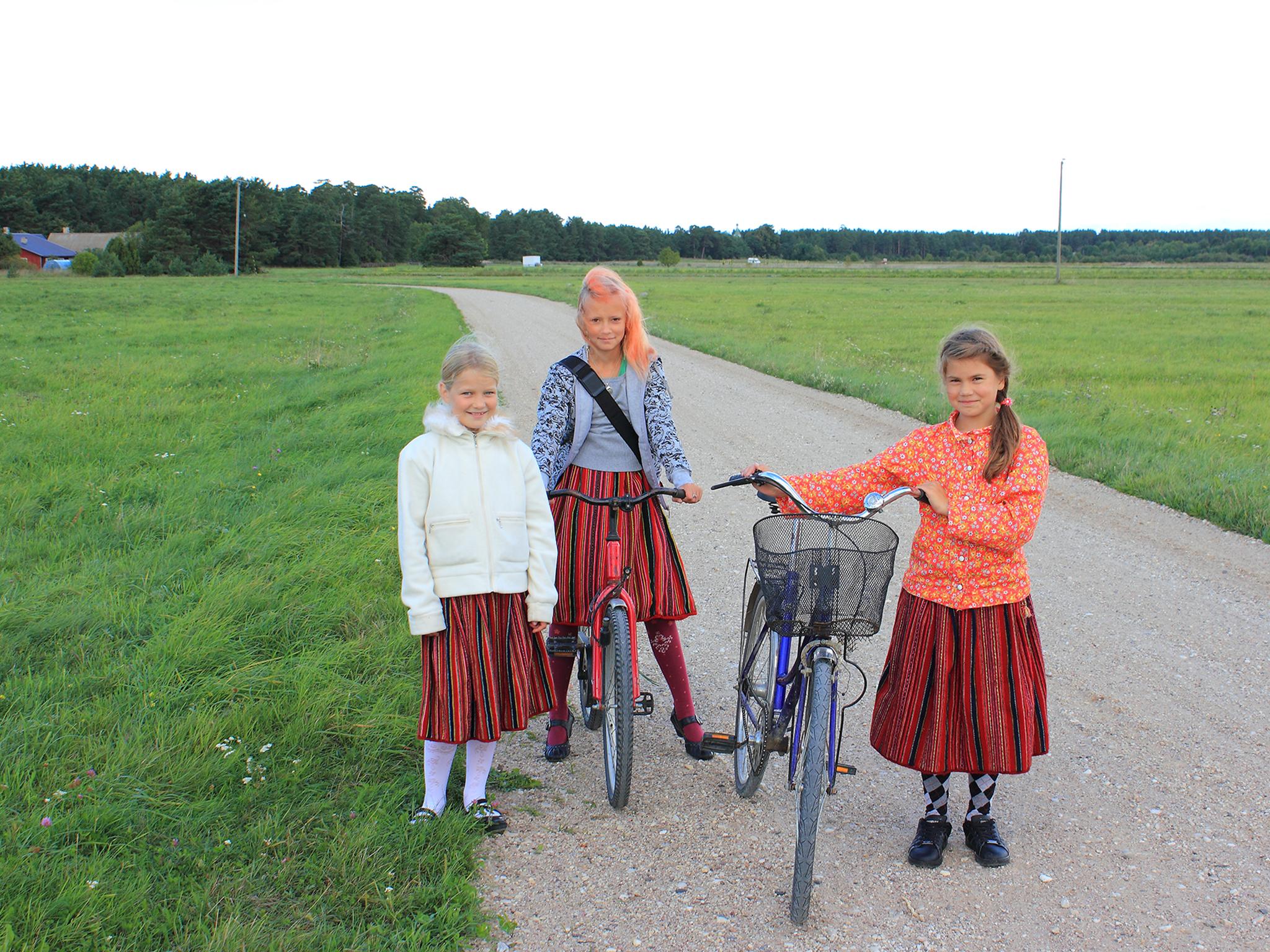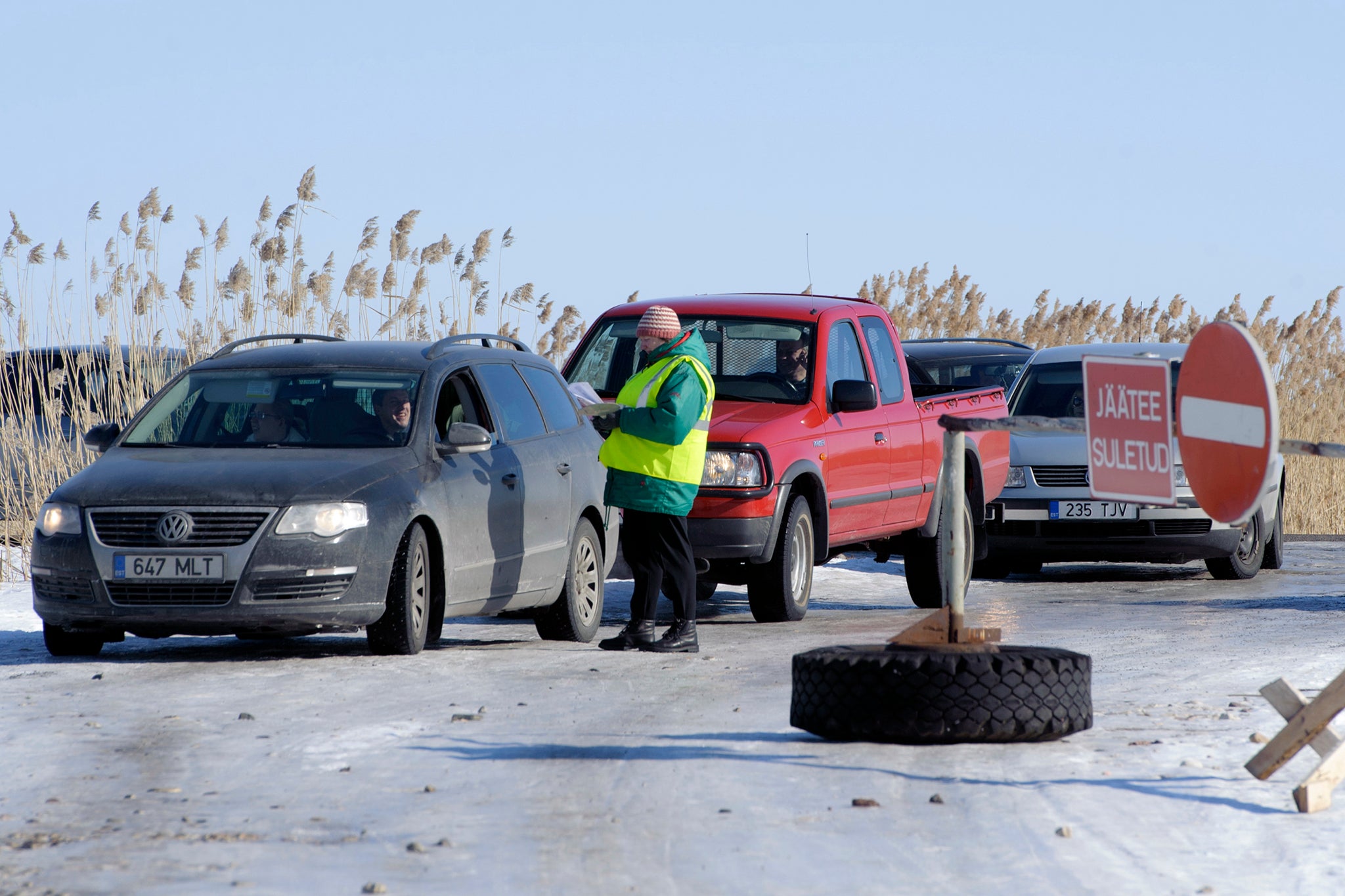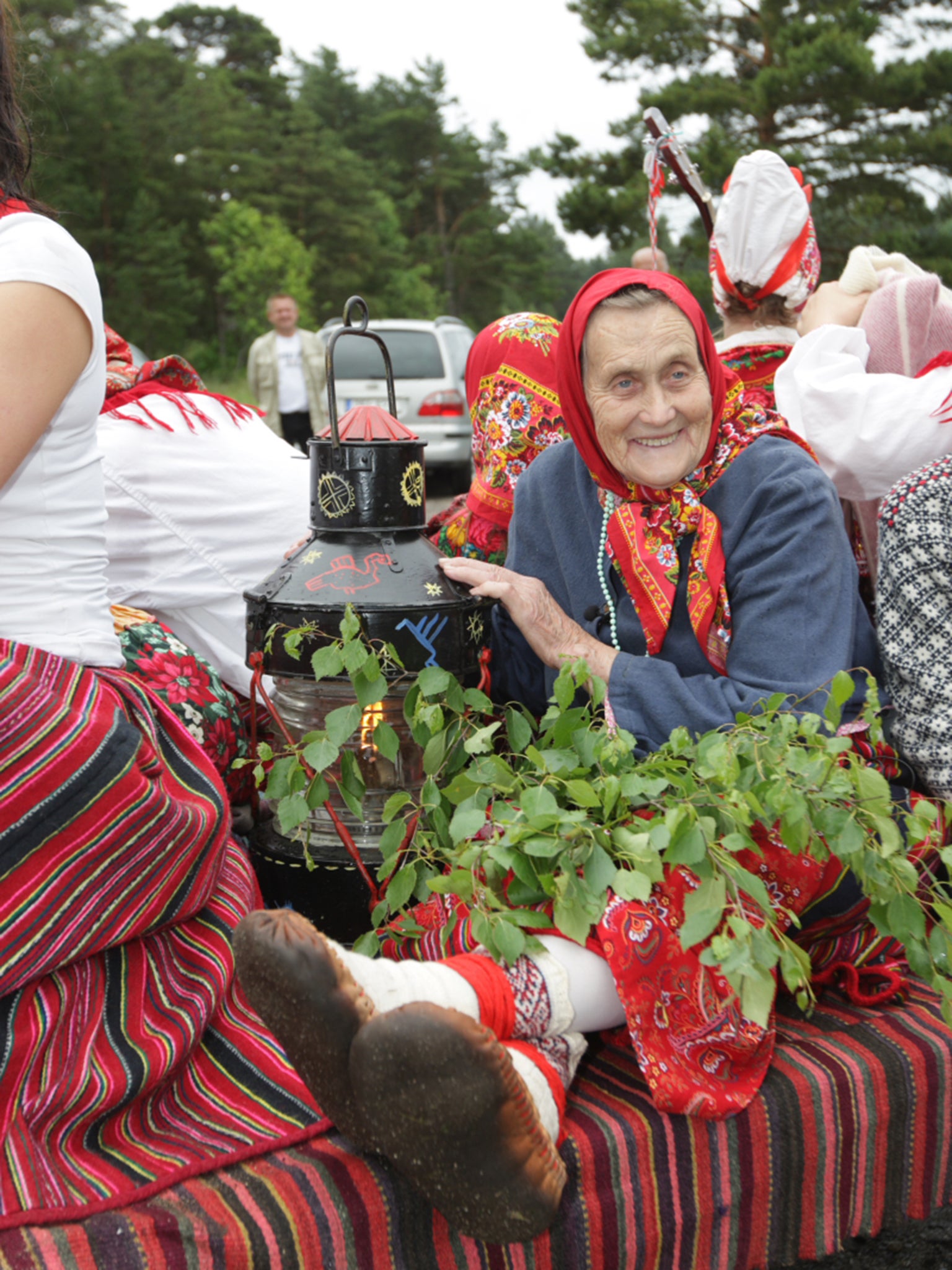What life is like on the island run by women
On the Estonian island of Kihnu, there's nothing women don't do. Hillary Richard considers the past, present and future of this unique cultural gem

Your support helps us to tell the story
From reproductive rights to climate change to Big Tech, The Independent is on the ground when the story is developing. Whether it's investigating the financials of Elon Musk's pro-Trump PAC or producing our latest documentary, 'The A Word', which shines a light on the American women fighting for reproductive rights, we know how important it is to parse out the facts from the messaging.
At such a critical moment in US history, we need reporters on the ground. Your donation allows us to keep sending journalists to speak to both sides of the story.
The Independent is trusted by Americans across the entire political spectrum. And unlike many other quality news outlets, we choose not to lock Americans out of our reporting and analysis with paywalls. We believe quality journalism should be available to everyone, paid for by those who can afford it.
Your support makes all the difference.In the Kihnu Museum on a tiny Estonian island, the elders, dressed in matching striped skirts, ponder a favourite question over coffee. What hasn’t a Kihnu woman done? They kept a running list of all of the necessary jobs they remember Kihnu women doing in the absence of men, from fixing tractor engines to performing church services when the Russian Orthodox priest wasn’t available. So far, there has been only one job no one can claim.
“Digging a grave”, Maie Aav, the museum director, says, “but even that is questionable”. Like the elders, Aav, who is in her mid-40s, is also wearing a traditional skirt (called a kort), but hers has a slight colour variation to represent her younger age.
Visitors to this peaceful isle in the Baltic Sea are struck by its windswept beaches surrounding pristine forests and the occasional brightly coloured farmhouse. At nearly seven square miles, Kihnu is the seventh largest of Estonia’s more than 2,000 islands.
Many Estonian islands have remained unspoiled and untouched since they were last inhabited centuries ago. In contrast, Kihnu stands out precisely because of its inhabitants. The island is known for its abundance of women.
Men began to fade from everyday life on Kihnu in the 19th century, thanks to their jobs at sea. Fishing and hunting seals took them away from home for months at a time. In response, Kihnu women stepped in and ran the island. Otherwise traditional female roles expanded to include anything their society needed to thrive and function. Eventually, this became ingrained in Kihnu heritage, as Unesco noted when it inscribed aspects of the culture on its Representative List of the Intangible Cultural Heritage of Humanity in 2008.
But tiny, traditional Kihnu has a growing modern problem. The population is shrinking as islanders move away because of a lack of jobs.
On top of that, changes in the fishing industry are bringing a new stress: the men are coming home for longer periods of time. Some have even stayed.
“We will have to commercialise eventually, but the question is which way is best for us,” says Mare Matas, president of the Kihnu Cultural Space Foundation, which is dedicated to promoting and protecting the islanders’ history and traditions through events, festivals and educational initiatives.

Like many Kihnu women, Matas is a multitasking dynamo who is fiercely passionate about preserving her heritage. In addition to managing several homestays on the island (including one at her own home), she is also the current lighthouse keeper and an island tour guide.
Her yellow house near the coast is a flurry of activity on the March afternoon I arrive by ferry from Munalaid Port, a harbour outside of Parnu, Estonia’s fourth-largest city that’s roughly 27 miles away. Her oldest daughter, Liis, then 18, is home from the mainland, where she lives during the week while she attends high school in Parnu. (There is no high school on Kihnu.) Anni, 12, and Maria, 9, are rushing to get ready for the school talent show this evening. (Her son Martin, 21, attends college in Tallinn, Estonia’s capital, about 110 miles away.) Like their mother, they all have flaxen blonde hair and piercing cornflower blue eyes.
At first glance, the petite 43-year-old mother of four would fit in anywhere with her sleek, chin-length bob, trendy black glasses and delicate gold hoop earrings. However, her closet is full of an everyday uniform of sorts: hand-woven skirts and custom paisley aprons.
An apron worn over a Kihnu skirt signifies a married woman. Matas’ husband, a fisherman, was away at sea.
When asked how many of the island’s estimated 300 year-round residents are men, Matas pauses to count in her head.
“Maybe five,” she offers. During my visit, I encounter only two: a visiting documentary filmmaker and a builder fixing a house.
Kihnu society functions as a large, tight-knit family – and with that comes all of the typical big family behaviour. At the school talent show, knowing looks volley from blonde head to blonde head as the women scoot their chairs closer to friends to gossip in low voices or exchange pleasantries in louder ones. A toddler roams around the schoolhouse gym freely, picked up and cuddled by unrelated women.
There is a clear hierarchy in Kihnu: children, community and, lastly, men.
“We have totally different mentalities than people on the mainland. Kihnu women always want to do what is best for the family, especially the children,” Aav tells me during a visit to the Kihnu Museum, which displays the history and culture of the island and its important artefacts.
The island is not for everyone – nor do the women want everyone to visit. Kihnu women are known for their candour, and the island is not for the easily offended.

“Mass tourism is not good for Kihnu,” Aav says. “We want cultural tourism; people who are really interested in our culture, our lifestyle, how we are living. If they’re interested, they’re welcome, but they must accept it.”
In fact, Kihnu’s charm is that it is in no way set up for mass tourism. A large tree branch propped against a house’s front door means nobody’s home. The only street signs are for the island’s four villages: Lemsi, Linakula, Rootsikula and Saare.
There are no lines on the road – and very few paved roads to paint a line on. There are no chains and no commercialisation. There is no ATM, no restaurant open year-round, and the first police station is currently under construction. Here, visitors are guests, not tourists. I stay in Matas’ homestead property and am quickly incorporated into her daily life, including meals, chores and island events.
“How do you welcome in the modern world, but keep this ancient culture alive? They’re in this limbo state of trying to find the balance,” Silvia Soide, a folk dance teacher and photographer, says. Soide moved from Vancouver, British Columbia, to Kihnu in December 2008 in honour of her Estonian grandmother who fled the island during World War II.

“The older generation wants to keep the traditions and culture alive, so they’re teaching what they were taught. It should stay alive; it’s a beautiful culture, but I know that younger people feel frustrated. They’re welcoming in the outside world because it offers them a way of survival. It’s a really great opportunity for Kihnu women to earn money during the tourism season,” says Soide, imagining jobs such as cooking, innkeeping, sales and waitressing.
Kihnu can feel much larger than its four-mile length and two-mile width, as I find out on a walk to the rocky coast and back one morning. The only signs of life I encounter are a hound dog, fast asleep on a sun-warmed road, and a curious seal bobbing in the waves off the jagged coast. I turn off the beach down one of the many unmarked sandy roads that cut through the towering forests. Behind me, waves from the Gulf of Riga crash against rocks. An occasional tree branch creaks or snaps in the wind. The forest grows wild, allowed to do what nature intended it to.
I think of the way Soide describs the island. “Everybody from Kihnu really loves Kihnu. It grows roots around your feet.” The forest has a fairy-tale quality that makes this seem plausible.
Much like Estonians at large, Kihnu’s residents have all been through significant changes in their lifetimes — often political (including Soviet and German occupation) and often out of their control. When asked about the island’s biggest changes, the answers vary wildly.
“Trousers,” says the shy Roosie Karjam, 83, sitting in the museum’s community room, after much thought and cajoling. Karjam, Kihnu’s most famous weaver and a beloved elder, nods her kerchiefed head firmly, her fingers twisting and untwisting as if weaving air. “Women never used to wear trousers.”
That afternoon, armed with gifts of apples and schnapps, Matas and I visit 91-year-old Virve Koster at her log cabin in the woods. When asked what has changed during her lifetime, she laughs. “Oh, everything,” she declars. Better known as “Kihnu Virve”, she had reinvented herself in her Seventies, going on to become one of Estonia’s top-selling female folk singers.
As a woman on Kihnu, there is a strong sense that everything is possible. If something needs to be done, a woman on Kihnu has done it, and another woman will probably do it again soon.
The conversation inevitably turns to the uniqueness of the island. While sitting across from Koster, Matas ponders the concept of feminism, often met with bewilderment here. The reasoning: Of course, women are capable. Of course, women are competent. But no, men and women aren’t equal — women have proven they can do everything men can, but men can’t do everything women can.
“People think we are making some statement with the women being in charge, but that’s our culture,” she reasons. “It works. We can’t imagine it any other way.”
© New York Times
Join our commenting forum
Join thought-provoking conversations, follow other Independent readers and see their replies
Comments